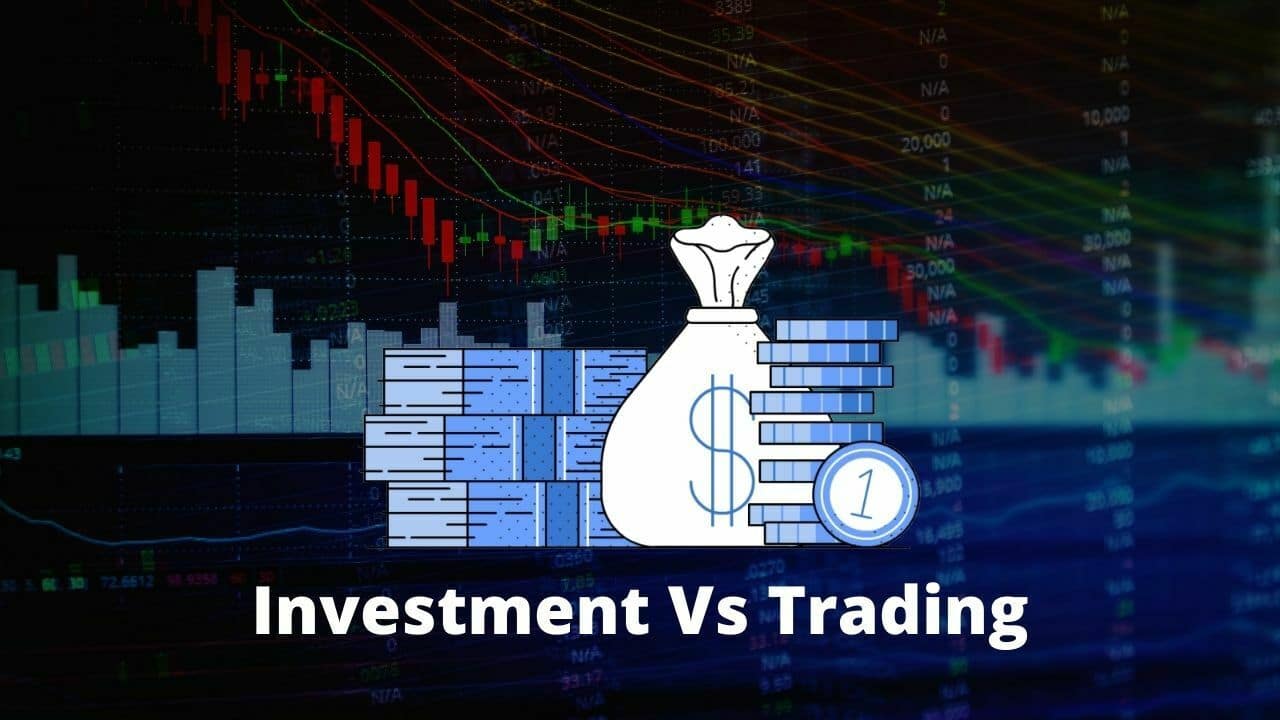Investing vs Trading
In Investing vs Trading, There is a myth that investing and trading both care same. Traders and investors both are opposite sides of a coin. If we want to make money in the stock market, it’s easy to get the terms mixed up.
But it’s their opposing approaches to achieving the wealth goals. Traders trade tickers, and investors invest in companies, to put it simply. Let’s take a closer look on an each activity.
Primary Philosophy:
The main philosophy to remember is that one is purely based on fundamentals and the other is based on technicals.
Investors
Investors examine the stock market primarily from a fundamental standpoint. They are completely invested in what a company does and will continue to do when they choose a stock. They are more concerned with the bottom line. Investors examine a company’s financial reports. This reports include balance sheets, income statements, cash flow statements, and other documents that the company is required to provide to its shareholders.
Shareholders can see a company’s debt in relation to its overall cash flow, their market share in comparison to competitors, their growth and projections, and, most importantly, how much profit they’re making. All of these things are important to investors. During earnings season, they pay close attention to a company’s conference call, the amount of dividend it will pay out for the quarter, and any other relevant information an investor would need to decide whether or not to buy the company’s stock.
Traders
Traders examine the stock market primarily from a technical standpoint. They employ a variety of tools that a typical investor would not. A stock scanner is one of these tools. This is an important tool that allows traders to find their stocks at any time by filtering specific settings to their preferences. It will allow them to choose any stock, regardless of whether it is gapping up or down, small or large cap, high or low volume, or float. This is all technical jargon that an investor is unlikely to be looking for. The point is that traders are looking for large price swings in order to make a profit, and these filters in the stock scanner can assist them in doing so.
Traders are looking at a company’s stock chart while investors are looking at its financial reports. Traders can use a variety of study indicators within that chart to determine when to enter and exit trades. They research indicators such as moving averages to determine whether a stock’s trend is bullish or bearish. They use the relative strength index (RSI) to determine whether a stock is oversold or overbought.
Traders, on the other hand, look for certain patterns in a stock’s chart before trading it. Every trader has a strategy in mind, and they’re looking for patterns that fit into that strategy. Traders then look for levels of support and resistance that have been validated. They consider a variety of other factors, including the spread between the bid and ask on level 2, the type of transaction occurring on time and sales, and the type of candlestick they’re about to buy. All of these tools are particularly useful for day traders. I’ll get to that later.
Remember
- Never try to time the market, as any wise investor will tell you. Unlike traders, investors not show interest in tracking daily or even weekly price fluctuations. They don’t pay as much attention to market volatility as a trader would. Their perspective is much longer-term than that of a trader. And that outlook could last for at least five years, if not longer. For an investor, timing the market is a fool’s errand.
- However, for a trader, market timing is crucial. Swing traders seek to buy low and sell high, or buy high and sell low if they’re shorting multiple times, by taking advantage of price fluctuations that an investor would typically ignore. A trend trader attempts to buy high and sell higher, or to short sell low and buy back lower. To put it another way, a trader will buy a stock for the short to medium term, whereas an investor will buy a stock for the long term.
- It’s also crucial to distinguish between different types of traders. A day trader will buy and sell a stock within hours, minutes, or even seconds on the same day. A swing trader, on the other hand, will hold a stock for at least one day.
- Spending more time in the market will naturally expose you to a higher level of risk. In terms of buying and selling, a trader’s time in the market can be significantly longer than that of an investor, necessitating a higher level of skill to be successful in making money.
- A trader must cut losses faster, whereas an investor can wait for the company to recover if it hits a snag as long as its fundamentals remain intact.
- Each of these activities necessitates a distinct mentality. Investors must have some faith or intuition in the company they are buying. The approach of a trader is a little less emotional. When analysing a stock’s technical setup, their decisions should all be based on logic.
Last Thoughts In Investing vs Trading
Regardless of how you approach the stock market, you’ll need to do a lot of research. To determine whether a stock is worth trading, a trader must examine a variety of technical conditions. And an investor must research a company’s financial philosophy and overall product or service to determine whether it is viable for long-term growth.
Also Read
Trading Strategies That Lose Money


